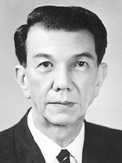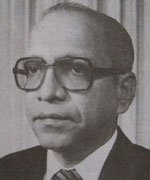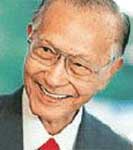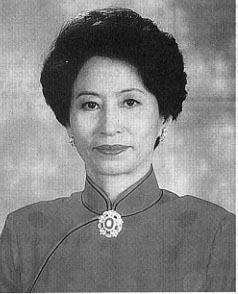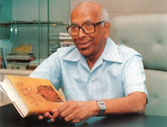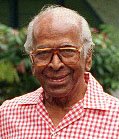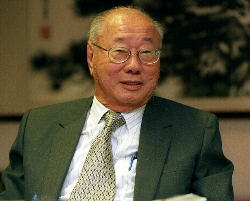 Lim Kim San (林金山)Born: Nov 1916Birth Place: SingaporeDied in: 2006Age: 89Achievement: Public Housing programme in Singapore
Lim Kim San (林金山)Born: Nov 1916Birth Place: SingaporeDied in: 2006Age: 89Achievement: Public Housing programme in SingaporeLim Kim San was born in Singapore in year 1916, the eldest son of a merchant. Lim Kim San grew up in an extended family, in a house situated in the middle of a rubber estate along River Valley Road. He was first educated in Oldham Hall School, the Anglo-Chinese Continuation School, then Anglo-Chinese School.
The Great Depression was after he left ACS in year 1933. His hope of going to England to pursue a Law degree failed to be realised as his father's business suffered badly and he could not afford to send his son abroad. Lim Kim San did not wish to go to Raffles College, then the only tertiary institution in Singapore. Therefore, he had to join the workforce at the Straits Steamship Company as a clerk.
When Raffles College finally started its department of Economics, Lim Kim San enrolled and continued his education. It was then that he first met future Cabinet colleagues such as Goh Keng Swee and Hon Sui Sen.
Upon graduating with a diploma in Arts in year 1939, Lim Kim San did not wish to be a teacher, and his results did not give him the opportunity to join the colonial civil service. So, he worked as a pump attendant for a year or two in a petrol station at Finlayson Green, which was owned by his father. He then worked in a sago-processing factory owned by his father-in-law. This early working experience honed his business acumen and contributed to his keen judgement of character after.
Lim Kim San escaped to Sumatra at the start of the Japanese Occupation in year 1942, but returned to Singapore a week later. He was twice arrested by the Kempeitai and tortured.
After the war, Lim Kim San focussed on business, taking over the management of his father-in-law's business and two merchant banks.
In 1959, Lim Kim San was approached by Goh Keng Swee, Toh Chin Chye and Lee Kuan Yew to contest the upcoming elections on a People's Action Party (PAP) ticket. Lim Kim San demurred, citing his business commitments, but he drew on his overdraft to fund the PAP campaign.
When the PAP won the elections and formed the government, Lim Kim San agreed to serve in the Public Service Commission and chair the Housing Development Board (HDB). He volunteered his service to the HDB for four years - setting policies, managing planners, architects and contractors, slashing red tape to get the public housing programme off to a quick start - all the while refusing a salary till he became a Cabinet Minister in 1963. In two years, the HDB under Lim Kim San's leadership built 26,168 units, the same number built by the colonial Singapore Improvement Trust in 32 years. For his efforts, he was awarded the Order of Temasek - the highest state honour - in 1962.
In September 1963, Lim Kim San was persuaded to stand for elections in Cairnhill. He won and was pressed into service as Minister for National Development when two PAP ministers lost their seats.
From 1965 till his retirement in year 1981, Lim Kim San held important Cabinet posts. Besides the National Development portfolio, he has been Minister in-charge of Defence, Communications, Environment and Education. He even continued to serve as Minister without Portfolio after he suffered a heart attack in year 1976.
As a senior civil servant, he has headed the Monetary Authority of Singapore and chaired important statutory boards, including the Public Service Commission, Public Utilities Boards (PUB) and Port of Singapore Authority (PSA).
His contribution to Singapore's infrastructure is far reaching: initiating its land reclamation programme, building reservoirs and successfully negotiating a third water pipeline from Johore.
Lim Kim San continues to actively contribute to the PAP, Singapore and its business after his retirement. A keen judge of character, his services have been called on to identify and screen new blood for the PAP. Since 1988, he has been Chairman of Singapore Press Holdings which publishes all of Singapore's newspapers. He is also the Chairman of the Board of Advisors to the Elected President.
Lim Kim San's business acumen, practical approach and his instinct about people set him apart from the ideologues of Singapore's old guard. His talent is clearly in business organisation, team building and people management. In that perspective, his enduring contribution to Singapore can be measured by his role as a technocrat and businessman rather than a politician.
Year 2006, Lim Kim San passed away with an age of 89.

